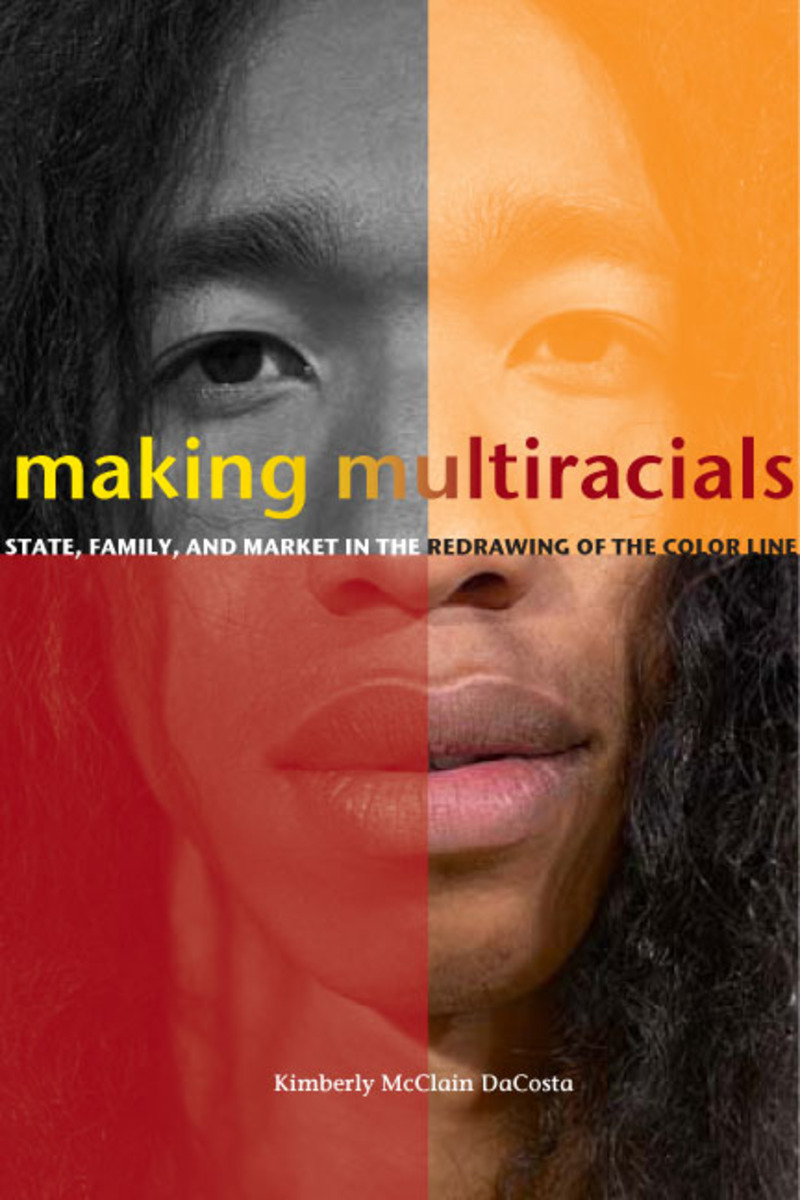Color outside the linesPosted in Articles, Census/Demographics, Media Archive, Politics/Public Policy, Social Science, United States on 2011-01-05 05:17Z by Steven |
Columbia Missourian
2006-06-11
Sara Fernández Cendon
The boundaries between traditional racial categories shift as more people identify themselves as multiracial. The term adds another dimension to the complex issue of race in America.
Some say Tiger Woods started it all.
After winning the Masters Tournament in 1997, the golf star described himself as “Cablinasian” — as in Caucasian, black, American Indian and Asian.
Colin Powell, a light-skinned black man, quickly dismissed Wood’s invention.
“In America, which I love from the depths of my heart and soul, when you look like me, you’re black,” Powell said.
Woods says “Cablinasian” honors his multiracial heritage. In 1997 he told Oprah Winfrey that being identified solely as an African-American bothered him. But others, who agree with Colin Powell, believe Woods will always be thought of as black and treated as such.
The Woods-Powell disagreement illustrates the deep rift between those who believe that race is a biological category and those who believe it is a political one. As more mixed-race couples join Woods’ camp by identifying their children as “multiracial,” or even “white,” civil rights groups worry about the loss of historical racial categories.
Critics of the multiracial label believe the American racial landscape is still dominated by the “one-drop” rule, which held that a person with just one black ancestor was still black. Their argument is that you don’t need much “color” to be a “person of color.” Discrimination affects people of color, they say, regardless of how light their skin might be or how they identify themselves racially…
…AGAINST THE MULTIRACIAL LABEL
White people have made disparaging racial comments around him expecting to get a nod in return. But fair-skinned, red-haired, blue-eyed David Brunsma has no tolerance for “whiteness” because “white” to him is synonymous with privilege. He says he gets questions like, “What are the best neighborhoods in town, if you know what I mean …” His response: “No, I really don’t know what you mean.”
Half-Puerto Rican and half-Caucasian, Brunsma does not think of himself as biracial, but he does consider “Hispanic” to be a racial category…
…FOR THE MULTIRACIAL LABEL
Susan Graham and Project RACE
You can’t blame Ryan Graham for not wanting to check “other” on questionnaires requesting racial information. “It makes me feel like a freak or a space alien,” he testified during a U.S. House hearing on multiracial identification back in 1997, when he was 12 years old.
Ryan’s mother, Susan Graham, is the executive director of Project RACE, an advocacy organization for multiracial individuals. She, too, testified before the House on behalf of a separate multiracial category in census forms.
In her testimony, Graham berated the “all that apply” compromise announced by the Office of Management and Budget just days before the hearing.
“My children and millions of children like them merely become ‘check all that apply’ kids or ‘check more than one box’ children or ‘more than one race’ persons. They will be known as ‘multiple check offs’ or ‘half and halfers,’” she said…
Read the entire article here.

